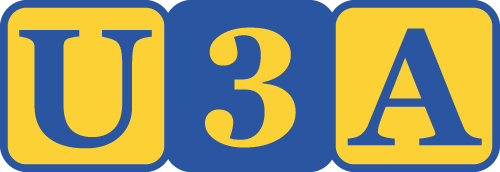City of Whittlesea
Photographers can go into the draw to win a $100 Westfield Gift Voucher. Winning images will be used in Whittlesea Council’s 2015 Community Calendar.
Details: www.whittlesea.vic.gov.au
The City of Whittlesea is one of the fastest growing municipalities in Australia, and welcomed 8500 new residents in 2011.
Our current population is approximately 170,000 residents and is expected to grow to 295,000 persons by 2031.
We are also home to Australia’s fastest growing suburb over the last 10 years – South Morang.
Our growth is not just taking place in our newer suburbs, but there is also massive growth and redevelopment set to take place in our established areas – such as Epping, Thomastown and Lalor.
Residents
There are a higher than average number of people aged under 25 living in the City of Whittlesea, and a lower proportion of people in older age groups.
We are one of the most multicultural municipalities in Victoria, with over half of our residents identifying with non-English speaking backgrounds (NESB). Our residents come from a wide range of backgrounds with a very high percentage born in other countries, particularly Italy, Macedonia, Greece and Vietnam. New migrants also make up a small percentage of the Whittlesea community.
The urban areas of Thomastown, Lalor and Epping contain a greater proportion of people from non-English speaking backgrounds than other parts of the city. These residents bring with them many aspects of their own cultures, which contribute greatly to the character and identity of the City of Whittlesea.
Suburbs and geography
We are one of the largest municipalities in metropolitan Melbourne, covering an area of approximately 489 square kilometres. About 70 per cent of the City is rural area, with the other 30 per cent being urban area, comprising houses, shops and factories.
Our rural north includes the suburbs of Wollert, Woodstock, Donnybrook, Eden Park, Yan Yean, Humevale, Kinglake West and part of Beveridge.
Suburbs and postal districts within the City of Whittlesea are:
- Beveridge – 3753 (split)
- Bundoora – 3083 (split)
- Donnybrook – 3064
- Doreen – 3754 (split)
- Eden Park – 3757
- Epping – 3076
- Humevale – 3757
- Kinglake West – 3757
- Lalor – 3075
- Mernda – 3754
- Mill Park – 3082
- South Morang – 3752
- Thomastown – 3074
- Whittlesea – 3757
- Wollert – 3750
- Woodstock – 3751
- Yan Yean – 3755
History of our suburbs
Bundoora
Bundoora was named after Keelbundoora, which was the name of the parish (land) where Bundoora exists today.
Keelbundoora was also the name of the young boy present at the signing of the Batman treaty, a historic land agreement made by European settler, John Batman with the Aboriginal people of Melbourne in 1835. The treaty was later ruled invalid by the government of the day. Only a small part of Bundoora is within the City of Whittlesea boundary, the rest of the suburb is served by Darebin City Council and Banyule City Council.
Lalor
Lalor was established in the early 1940s. Lalor was originally the home of a low-cost housing project that provided houses for ex-servicemen returning from World War II. The first primary school opened in 1954.
Thomastown
Probably named after the Thomas family, which bought land near what is now Main Street in 1848, the name Thomastown has been in official use since the early 1850s.
The area around Thomastown has also been known at various times as Micklenbury, Dry Creek and Westgarthtown. Up until the mid-twentieth century, Thomastown’s economy was predominantly farming and market gardening.
Early industrial development included the establishment of a pottery in Settlement Road in 1922. The electrification of the railway line to Thomastown in 1929 prompted the subdivision of land around the railway station for residential development. However, residential and industrial development remained limited until the end of the Second World War.
Epping
Epping was named in 1853 reportedly after the Epping Forest in Essex, England. The first hotel was opened in 1853. The first catholic school was opened in 1844.
South Morang
South Morang is named after the Parish (or area) of Morang where the suburb exists today. The first primary school in South Morang was built in 1877 and the suburb has 2 major parks, Hawkstowe and Plenty Gorge Parklands.
Whittlesea
Whittlesea, as the township came to be called, was named after Whittlesey in England. Close to 1889 a railway from Whittlesea to Melbourne was established to transport goods produced in the region to Melbourne. The railway closed in 1959.
Mill Park
Mill Park was named after Henry “Money” Miller who bred racehorses and conducted a range of dairy and grazing activities at his property named, The Findon Hounds and the Findon Harriers Hunt Club’ until 1930. Residential development began in Mill Park in the 1970s.
Mernda/Doreen
This area has grown from a population of 1316 in 2001 to 3430 in 2006, and is anticipated to grow to around 40,000 people at full development. The name Mernda means “young girl” in the local Wurundjeri Aboriginal language.
When Mernda was named in 1913 the township consisted of a school, a Methodist church, a store and a railway station. In the early 1900s there were many dairy farms in Mernda that supplied milk to Melbourne.
